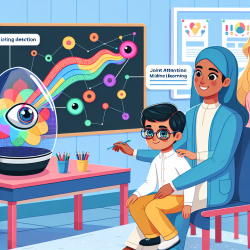Empowering Change: Integrating Health into Environmental Impact Assessments
As a speech-language pathologist dedicated to data-driven decision-making, I recognize the profound impact that environmental factors can have on health outcomes, particularly for children. A recent study, "Integrating Human Health into Environmental Impact Assessment: An Unrealized Opportunity for Environmental Health and Justice," provides valuable insights into how practitioners can enhance their skills by incorporating health considerations into Environmental Impact Assessments (EIA).
The Importance of Integrating Health into EIA
The National Environmental Policy Act (NEPA) and related state laws mandate that public agencies evaluate the potential environmental effects of their actions, including impacts on human health. However, the consideration of health within EIA is often limited and narrowly focused on toxic exposures. This oversight fails to address the broader social, economic, and environmental determinants of health, which are crucial for creating healthier communities.
Opportunities for Practitioners
Practitioners have a unique opportunity to advocate for a more comprehensive approach to EIA by integrating Health Impact Assessments (HIA). This integration can lead to:
- Enhanced Public Health Outcomes: By considering a wide range of health determinants, practitioners can help shape policies that promote health equity and well-being.
- Informed Decision-Making: A thorough analysis of health impacts provides decision-makers with critical information to make informed choices that benefit communities.
- Community Engagement: Involving affected stakeholders in the EIA process ensures that their health concerns are addressed, fostering trust and collaboration.
Challenges and Recommendations
Despite the benefits, integrating health into EIA presents challenges, such as the need for interdisciplinary collaboration and the development of appropriate analytical tools. To overcome these challenges, practitioners should:
- Engage with Local Agencies: Familiarize yourself with regional EIA activities and participate in public hearings to advocate for health considerations.
- Partner with Communities: Collaborate with affected communities to understand their health concerns and use public health data to inform EIA processes.
- Seek Training and Resources: Pursue training in HIA and EIA methodologies to build the necessary skills for effective participation.
Conclusion
Integrating health into EIA is a powerful tool for promoting public health and environmental justice. By embracing this approach, practitioners can play a pivotal role in shaping policies that create healthier, more equitable communities. To read the original research paper, please follow this link: Integrating Human Health into Environmental Impact Assessment: An Unrealized Opportunity for Environmental Health and Justice.










